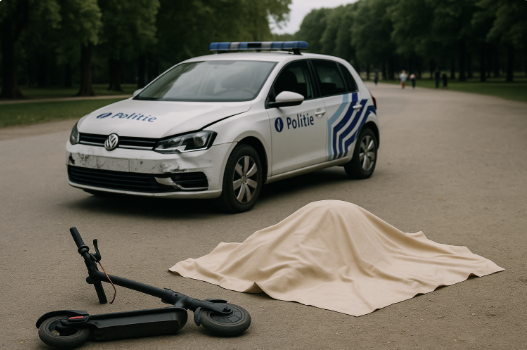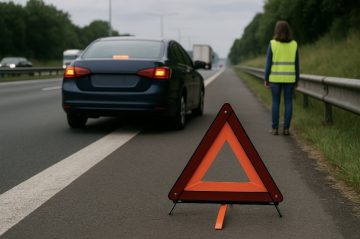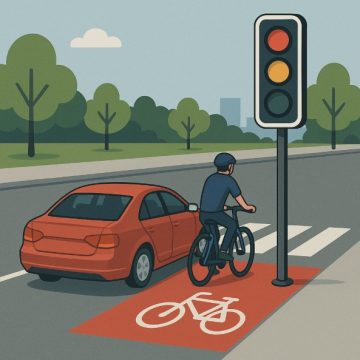🚨 Death of Fabian, 11, Hit by a Police Car: What Is “Malicious Obstruction of Traffic”?
🔹 A tragedy, a question: accident or serious criminal offence?
On June 2, 2025, the daily life of many Brussels families took a tragic turn. Fabian, aged 11, was riding his electric scooter through Elisabeth Park in Ganshoren. Moments later, he lay on the ground, fatally struck by a police car involved in a pursuit.
The story sent shockwaves through Belgium. But beyond the emotion, one legal term caught the public’s attention: the officer driving the car was charged with “malicious obstruction of traffic resulting in death” — a rarely discussed offence, but one carrying very heavy penalties.
⚖️ What does “malicious obstruction of traffic” mean?
📜 A criminal offence, not a simple traffic violation
Unlike most road-related offences — such as speeding, running a red light or driving under the influence — malicious obstruction of traffic is a criminal offence under Articles 406 to 409 of the Belgian Criminal Code.
It goes beyond carelessness or negligence: it targets deliberately dangerous conduct that puts others at serious risk.
🧩 Three cumulative conditions must be met:
-
A voluntary act: It’s not enough to have made a mistake. The person must have consciously engaged in risky behaviour (e.g., speeding through a pedestrian zone without urgent justification).
-
A real danger to traffic: The behaviour must obstruct or endanger road safety.
-
Harmful consequences: If death or injury results, the penalties are severe.
🔺 In case of death, the penalty is 20 to 30 years in prison (Article 408).
🔺 In case of injury, the penalty is 10 to 15 years in prison (Article 407).
🚓 Why was this charge used in Fabian’s case?
The initial facts reveal concerning circumstances:
-
The police car was driving inside a pedestrian park, at an estimated speed of 40 km/h;
-
No siren or flashing lights were in use;
-
The intervention was about checking a scooter, with no urgent threat reported.
These elements suggest that the officer may have deliberately driven unsafely in an inappropriate environment, ignoring basic safety rules — which is why prosecutors used this specific charge.
🏛️ Why does the law treat this so harshly?
The goal of this offence is to punish behaviour that knowingly puts road users in danger.
It is not about minor carelessness, but about conscious decisions that expose others to serious, sometimes fatal, harm.
The law sets a clear boundary: on public roads, knowingly ignoring the rules that protect life can lead to criminal responsibility, even if there was no intent to kill.
🧭 It’s about responsibility, not intention to kill
In Fabian’s case, no one claims the officer meant harm. But the justice system must ask:
Did he knowingly take unnecessary risks?
Could he have foreseen that his actions were dangerous?
Was this tragedy avoidable?
If the answer is yes, then the charge of malicious obstruction of traffic may be legally justified — because it’s the recklessness, not just the result, that the law condemns.
🤲 A tragedy that raises broader questions
This case also invites reflection on:
-
Police intervention protocols in urban or pedestrian areas;
-
Officer training on risk management, especially near children or micromobility users;
-
Public safety in mixed-use spaces, like parks where pedestrians and vehicles can cross paths.
📌 Key takeaways
| Element | Explanation |
|---|---|
| Offence | Malicious obstruction of traffic (Art. 406–409 Criminal Code) |
| Conduct | Voluntarily dangerous act, endangering road safety |
| Aggravating factor | Death of a person = 20 to 30 years’ imprisonment |
| Liability | Based on the deliberate and wrongful choice, not the intent to kill |
🧶 In conclusion
Fabian didn’t have a chance to get out of the way.
His family, the public and the courts are now left wondering: could this have been prevented?
The answer lies in a careful legal analysis of this serious offence — and perhaps in a broader societal reflection on how safety, responsibility and prevention should guide all public interventions, including those carried out by the police.
For any questions or legal defence related to traffic law, feel free to contact me.




